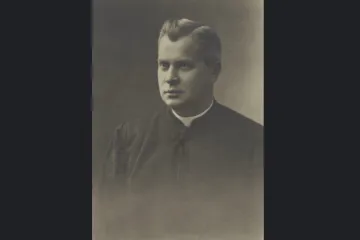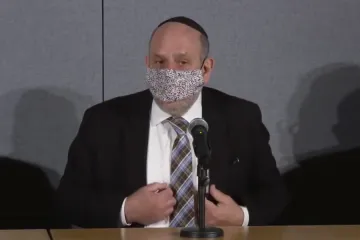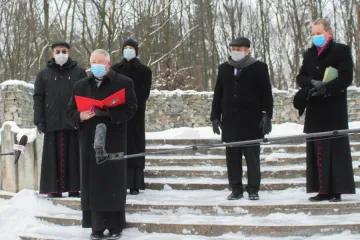CNA Staff, Apr 19, 2021 / 13:00 pm
A Polish Catholic bishop said Monday that the anniversary of the Warsaw Ghetto Uprising is a reminder of the need to love one’s neighbor.
In a message, Bishop Rafał Markowski paid tribute to the estimated 13,000 Jewish people who died after the uprising began in the Polish capital on April 19, 1943.
“The anniversary of the Warsaw Ghetto Uprising is an appeal to love one’s neighbor, for respect and recognition of the dignity of every human being,” said Markowski, an auxiliary bishop of Warsaw and chairman of the Polish bishops’ committee for dialogue with Judaism.
“It should be unequivocally recalled that, in light of the Gospel, any manifestation of hatred and aggression, including anti-Semitism, is a sin.”
The uprising -- the largest single Jewish revolt of World War II -- was launched 78 years ago when Nazi Germans tried to transport the population of the Warsaw Ghetto to the Majdanek and Treblinka death camps.
Despite being massively outgunned and outnumbered, fighters continued to battle the Nazis for almost a month, until May 16, 1943. General Jürgen Stroop, who oversaw the suppression of the revolt, sent a triumphant report to SS chief Heinrich Himmler entitled “The Jewish Quarter of Warsaw Is No More!”
The 63-year-old bishop described the uprising as a heroic attempt to thwart “the demonic plan to exterminate the entire Jewish people.”
“The German occupiers had begun murdering the inhabitants of the Warsaw Ghetto two days before the most important Jewish holiday, Passover, and the end of the extermination of Jews in the capital was symbolized by the destruction of the Great Synagogue on Tłomackie Street,” he noted.
.JPG?w=600)
Before the Nazi invasion of Poland in 1939, Warsaw had the largest Jewish community in Europe.
The occupiers ordered the city’s Jewish population to move to a district that was just 1.3 square miles in size. They separated the so-called Warsaw Ghetto from the “Aryan” side of the capital in November 1940.
In July 1942, the Nazis launched the “Grossaktion Warschau,” in which more than a quarter of a million Jews were deported from the ghetto and murdered at Treblinka.
The uprising began a year later when the remaining population refused to surrender to Stroop, who then ordered that the ghetto be razed to the ground.
Many participants in the Jewish resistance movement were young. Mordechai Anielewicz, leader of the Jewish Combat Organization, which was instrumental in the uprising, was just 24 years old when he died on May 8, 1943.
.jpg?w=600)
Markowski praised the courage of the fighters, who knew that they faced almost certain death.
(Story continues below)
“They are a symbol of the fight for freedom. This is movingly expressed by one of the slogans of the uprising: ‘If we survive, then only as free people; and, if this is impossible, then as free people we shall die. We will conquer death in battle,’” he wrote.
“Today, we remember our brothers and sisters who died in the ghetto in shocking circumstances. We remember all those deported to extermination camps, to gas chambers in Treblinka, Majdanek, and to other places.”
The bishop referred to the Umschlagplatz Monument in Warsaw, which marks the spot where more than 300,000 Jews were transported from the Warsaw Ghetto to Nazi death camps.
He observed that near the monument on Stawki Street, which was unveiled in 1988, bloom daffodils, a flower associated with the ghetto fighters.
Each year on the uprising anniversary, the POLIN Museum of the History of Polish Jews holds the “Daffodils social and educational campaign” to raise awareness of the historical event.
Due to the pandemic, this year it is asking people to create representations of daffodils at home using a template.
“I would like to thank everyone who joined the ‘Daffodils’ campaign to commemorate the heroes of the Warsaw Ghetto Uprising,” Markowski said.
“In this way, we also emphasize the importance of community and solidarity, the need for dialogue beyond differences -- as the motto accompanying this campaign says: ‘We are united by memory.’”
Concluding his message, the bishop said: “On the 78th anniversary of the outbreak of the Warsaw Ghetto Uprising, we embrace the heroic insurgents and the civilian population of the ghetto in a special way with our thoughts, hearts, and prayers.”





